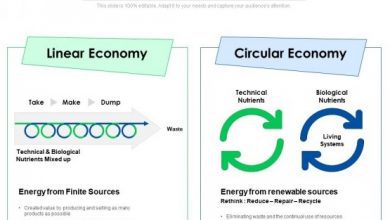What is a leadership development program and How to design
What is a leadership development program?
A leadership development program , also known as a LDP, is a set of various processes aimed at improving the skills and competencies of an organization’s managers and leaders .
Its objective is to strengthen the leadership culture in all teams and ensure that leaders are aligned with the values and organizational culture , serving as role models for others.
The LDP starts as a program to be implemented, but it becomes a continuous process of training and development , seeking to keep managers always updated and prepared for different demands that may arise.
One example is the impacts of the coronavirus pandemic . This event generated new training needs, preparing leaders to deal with mental health and the illness of employees due to the scenario, in addition to remote people management.
How important is the leadership development program?
The leadership development program does not only reflect on the professional development of managers , but also on the company as a whole. In this sense, the first results can be felt in the change in behavior and in the engagement of the team members .
In this way, the LDP can provide the team with better experiences, through leaders who are better prepared to manage with human capital, which results in a more positive image of the brand as an employer.
Benefits and Impacts of leadership development program
Next, we’ll look more closely at the benefits and impacts of the strategy on the organization.
1-Provides better results for the company
Well-trained leaders are able to guide and motivate employees so that they perform a more efficient and optimized work. As a result, the company achieves better deliveries and results, ensuring greater financial performance, including.
2-Ensures more attractiveness and retention of talent
Well-trained leaders also favor the organizational climate , bringing more engagement and qualification to employees and ensuring that they wear the company’s shirt and engage in a more effective way.
As a result of the actions, we can see an improvement in employer branding and in the attractiveness of the company as an employer, in addition to a reduction in turnover rates and an improvement in the retention of talent.
3-Improves internal communication
With a well-aligned culture and trained leaders, it is possible to guarantee much more efficient internal communication , bringing transparency to actions and providing a collaborative and integrated environment.
4-Strengthens organizational culture
The idea is that the LDP is prepared based on the organizational culture, developing leaders in the skills and values that the company considers its main pillars.
In this way, the program makes it possible for all leaders to understand and value this culture and to replicate it for their subordinates, strengthening it.
5-Reduces costs
Finally, it is important to emphasize that unprepared leaders can cause losses , including financial ones, for the company.
That’s because, wrong decisions increase turnover rates, decrease employee engagement and productivity, even leading to a greater number of errors and restatements.
Thus, investing in leadership development is an excellent way to ensure more profitability for the business and reduce unnecessary expenses, both in terms of financial resources and time.
How to design your leadership development program?
Although the leadership development program in organizations is an ongoing policy , it needs a kick start so that actions can be put into practice.
But how to do this? Below, we list some tips for you to develop your own LDP.
1-Create an initial plan
The first step in preparing the LDP is to carry out program planning.
For this, it is important to map the organization’s objectives in the medium and long term , evaluating the profiles of professionals that are necessary for these objectives to be achieved.
In addition, it is necessary to develop a communication program to inform managers about the process that is being carried out, what actions will be implemented, what is their importance and what results are expected.
2-Define leadership profiles
The idea of the LDP is, precisely, to develop important skills and competences to make leaders more efficient and aligned with the organizational culture.
Therefore, it is important for HR to understand which leadership profiles are present in the organization and what skills are expected of these leaders.
The ideal is to structure a list with the skills needed in each department and carry out a behavioral profile mapping of current leaders, understanding which ones already have the necessary skills and which ones need to be developed.
Also, it’s worth creating a list of potential contributors who have the skills they need to become leaders in the future.
3-Consider behavioral profiles
Behavioral management is a very important tool when creating your leader development program.
Based on the DISC methodology , it is possible to identify professionals in 4 main profiles: executor, communicator, planner and analyst.
Each of the profiles have distinct leadership styles that can be best leveraged in different contexts.
Thus, getting to know the professionals you will develop in depth is an important step to outline the types of training used and the approach.
4-identify gaps
In addition to getting to know the leaders, it is also necessary to understand the company’s shortcomings and which points need more attention .
To do this, consider what the organization expects from its leaders and what results need to be delivered in the short, medium and long term.
This process of identifying areas for improvement can even be done with the help of employees, through climate surveys, 360º performance assessments and feedback on leaders.
5-Create a pilot program
Before investing in a complete development program, it is possible to create a pilot, testing capabilities and training , for example, in a single department and evaluating the results of this action.
In this case, it is valid to create a schedule detailing the objectives of the action, how the development will be carried out, what training will be applied and how professionals will be evaluated.
It is worth remembering that the LDP is a continuous development strategy , but that it can also be used in specific actions, helping to meet specific demands and developing the potential needed for a good management of employees.
6-Evaluate the results
The leader development program does not end with its application . Once implemented, the results and performance of managers must be evaluated.
Thus, it is worth creating an evaluation schedule with a 360º view of the work performed.
In addition, it is necessary to closely monitor these professionals, drawing up, if necessary, individual development programs to help with specific skills.
Remember that leaders also need actions to stay engaged and motivated.
Therefore, HR must foster recognition and appreciation strategies , showing these professionals that their development is bearing fruit and reaching the company’s expectations.
As the LDP is a continuous process, if its results prove to be insufficient, it is worth reviewing the program, making changes and including new needs as the market changes.




